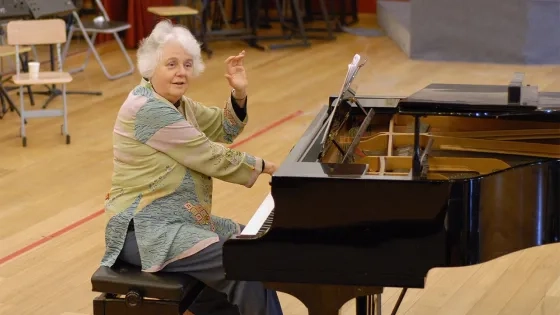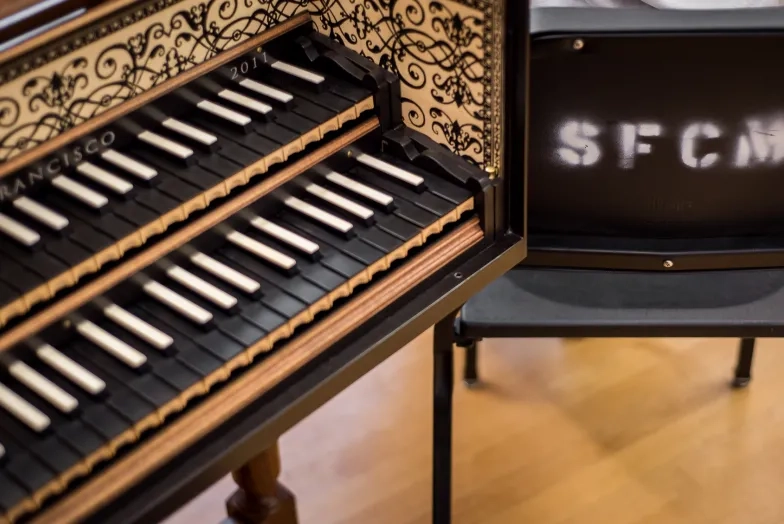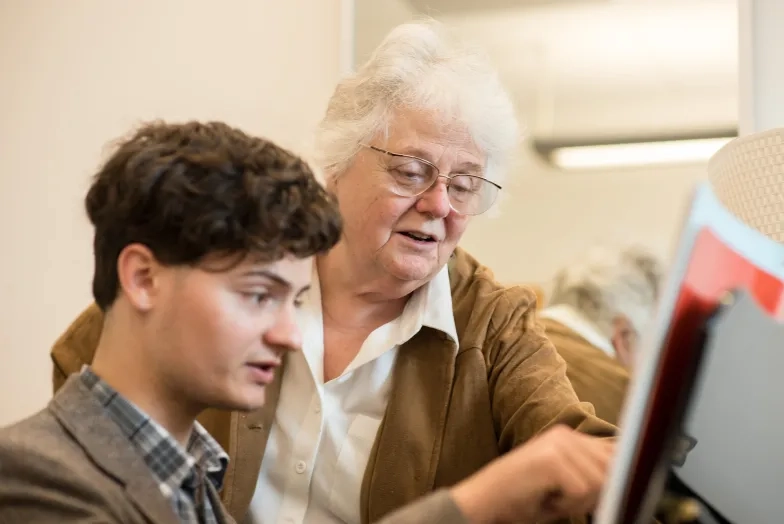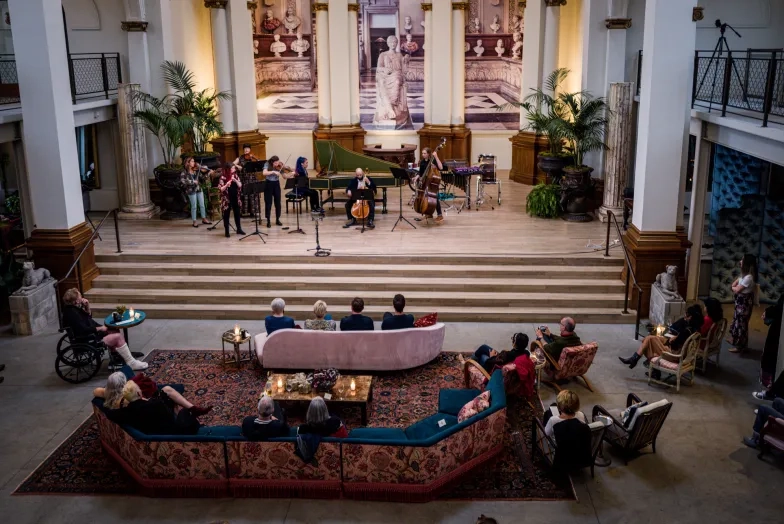Elinor Armer's Baroque Riddle
In one of the Conservatory’s most intriguing collaborations of the season, faculty composer Elinor Armer has written a new work for the Baroque Ensemble. The Ensemble performs Leonardo’s Riddle, its first-ever world premiere, on April 19 as a double tribute to a Renaissance polymath and a much loved contemporary composer and teacher. A portrait of two artists continually seeking answers to new questions, the piece perfectly punctuates SFCM’s year-long celebration of Armer and her work.
The Conservatory’s longest-serving collegiate faculty member and founder of its composition department, Elinor Armer has witnessed and influenced nearly half the school’s history. To celebrate her 75th birthday, Bay Area arts organizations are presenting a season of jubilee concerts. At SFCM, these have included a performance of works written by generations of Armer’s students and a recent all-Armer recital given by faculty colleagues. Far from accepting these tributes from her lofty perch as SFCM’s grande dame, Armer has jumped into the fray, using her own birthday celebration to explore new compositional corners.
Ever since a Boston museum exhibit sparked her fascination, Armer has wanted to write a tribute to Renaissance artist, scientist, inventor and musician Leonardo da Vinci. Decades of reading led her to the perfect hook: a musical rebus, or puzzle, that Da Vinci constructed out of solfege syllables. With a little doctoring, they form an Italian aphorism that begins, “Amore solla mi fa remirare,” (“Love alone makes me remember.”) From the solfege, Armer sketched out a theme in D minor with a whiff of antiquity to it. When it came to scoring the music, she says, “I just couldn’t see doing it for a full modern orchestra. I wanted the old sound, if you will, of the period instruments.”
Baroque Ensemble co-director Corey Jamason gladly accepted the challenge of Leonardo’s Riddle. “The piece is fantastic and it is a great opportunity to explore ‘new’ music on ‘old instruments.’” An archlute soloist (Adam Cockerham ’13) introduces the main theme and provides a narrative bridge between the piece’s five movements, written for period strings, modern winds and percussion. In a nod to Da Vinci’s penchant for mirror form – he wrote simultaneously with both hands from the center outwards – the piece follows a strict symmetry. Movements examining his identity as an explorer and inventor pivot on a central, painterly Fantasia in which melodic fragments gradually cohere into the most unabashedly beautiful music of the work. “It’s supposed to call up the image of an artist fixed on his subject, not even looking at his hands, and sketching the salient details in first.”
Leonardo’s Riddle is also an homage to Armer’s own grandfather, father and brother, artists and inventors who, she says, “could make anything out of metal or wood and were always fascinated with how things work.” As she continues to dismantle and reconstruct the raw materials of her own craft, Armer seems bemused by the results. She admits that her “late period” is trending in a surprisingly mellow direction, but towards basic values she has always held as a performing musician: “Something close to tonality. A belief that we all are basically tonal animals. And we can tug at that leash as hard as we want and have as long a leash from it as we want but we still are connected to it. So I have surrendered to that.”
The Baroque Ensemble performs Leonardo’s Riddle on Sunday, April 19 at 2 p.m. Admission is free. For more information on Armer’s Jubliee Concerts, visit elinorarmer.com.



